
In September 2022 Oxbow's bookshop and distribution buisness merged with Pen & Sword Books, a family run independent publisher of history books. The book distribution aspect of our business will continue to bring you some of the best books in the field of archaeology and related disciplines as Casemate UK. The Oxbow Books publishing imprint remains as a separate entity, still sold and distributed exclusively by us.
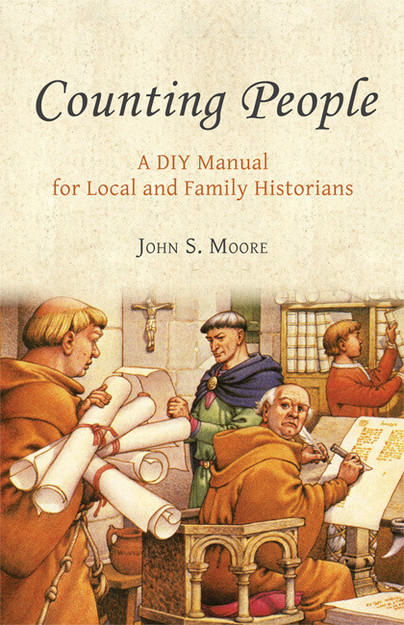
Format: Paperback
Pages: 140
ISBN: 9781842174807
Pub Date: 30 Sep 2013
Description:
Local and family historians are often afraid to use numerical data (Statistics) in their research and writing. Yet numbers are an essential part of much historical work, obviously in population history but also in local studies of agriculture, industry and social history. Counting People shows how amateur historians can use computers with appropriate programs to provide numerical illustrations of various historical topics as well as easing their researches.
A final chapter covers research and publishing in local history. The Bibliography provides advice on local historical studies in England and Wales and a full list of sources for population history in England and Wales as well as guidance on the use of computers in local studies.
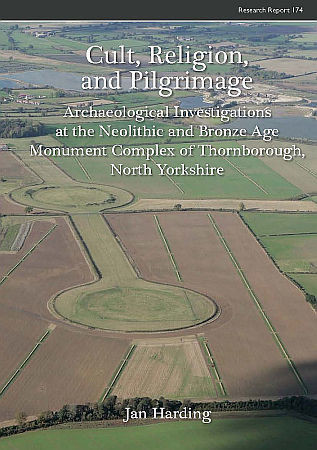
Format: Paperback
Pages: 260
ISBN: 9781902771977
Pub Date: 30 Sep 2013
Description:
The three large henges found adjacent to the village of Thornborough, near Ripon in North Yorkshire, lie at the heart of one of the most important Neolithic landscapes in the British Isles While the henges were first recorded in the eighteenth century, recent fieldwork has shown them to be part of a much larger ‘sacred landscape’ of the later Neolithic and Bronze Age which includes barrows, pit alignments and a cursus. Surrounding fields have yielded a rich collection of prehistoric flint artefacts. While the henges have all been damaged, either by agriculture or quarrying, they remain major upstanding features in the modern landscape.
This volume considers first the history of investigations and changing attitudes towards the monuments before describing the detailed geophysical surveys, excavations and fieldwalking programmes that have been carried out across this landscape in the past twenty years. The author concludes that this was an intensely religious landscape, situated on an important routeway across the Pennines. He considers how people, both those who lived locally and those who travelled long distances to visit the site as a place of pilgrimage, would have experienced and interacted with the monuments
New Light on Old Glass
Format: Paperback
Pages: 250
ISBN: 9780861591794
Pub Date: 30 Sep 2013
Series: British Museum Research Publications
Description:
This new publication brings together a range of leading scholars from Europe, America and the Middle East to discuss the most recent research in the field of Byzantine glass and mosaics in an interdisciplinary context. New Light on Old Glass explores how mosaics are perhaps the most outstanding examples of Byzantine art which survive; revealing changing aesthetics and issues surrounding the technical production of glass in medieval artistic practices. This is the first time that so many diverse papers, ranging from art history, archaeology, chemistry, physics and Byzantine studies have been assembled in one volume, and is the culmination of a five-year research programme on the Composition of Byzantine Glass Mosaic Tesserae, conducted by the University of Sussex in conjunction with the British Museum and sponsored by the Leverhulme Trust.
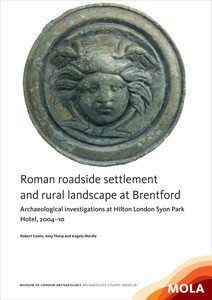
Format: Paperback
Pages: 110
ISBN: 9781907586194
Pub Date: 30 Sep 2013
Series: MoLAS Archaeology Studies Series
Description:
Excavations in Syon Park, Brentford, have made a substantial contribution to our knowledge of this Roman rural settlement on the London–Silchester road, by a ford across the Thames. The site yielded a well-dated sequence – from the mid 1st to early 5th century AD – including occupation deposits and two 2nd-century timber buildings destroyed by fire, as well as details of the main road and adjacent field system. These and a large assemblage of finds, including a surgical instrument and a roundel depicting the Medusa, provide a rare glimpse of life in the countryside in the hinterland of Londinium.
A detailed overview of Roman Brentford (the first to be published since 1978) is included.
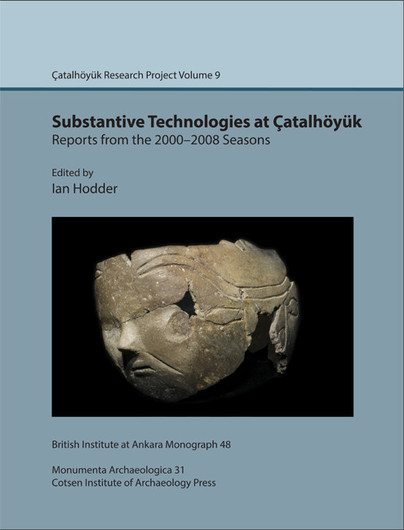
Format: Hardback
Pages: 300
ISBN: 9781898249313
Pub Date: 30 Sep 2013
Series: British Institute at Ankara Monograph
Illustrations: 250 illustrations and 50 tables
Description:
The Neolithic site of Çatalhöyük in Turkey has been world famous since the 1960s when excavations revealed the large size and dense occupation of the settlement, as well as the spectacular wall paintings and reliefs uncovered inside the houses. Since 1993 an international team of archaeologists, led by Ian Hodder, has been carrying out new excavations and research, in order to shed more light on the people who inhabited the site. The present volume reports on the results of excavations in 2000-2008 that have provided a wealth of new data on the ways in which humans became increasingly engaged in their material environment such that ‘things’ came to play an active force in their lives.
A substantial and heavy involvement was with alluvial clays that surrounded the site. In the absence of large local stone, humans became increasingly involved in the extraction and manipulation of clay for a wide range of purposes – from bricks to ovens, pots and figurines. This heavy use of clays led to changes in the local environment that interacted with human activity, as indicated in the first section of the volume. In the second section, other examples of material technologies are considered all of which in various ways engage humans in specific dependencies and relationships. For example, large-scale studies of obsidian trade have drawn a complex picture of changing interactions between humans over time. The volume concludes with an integrated account of the uses of materials at Çatalhöyük based on the analysis of heavy residue samples from all contexts at the site.
Prehistoric Communities at Colne Fen, Earith
Format: Hardback
Pages: 288
ISBN: 9780954482497
Pub Date: 02 Sep 2013
Imprint: Cambridge Archaeological Unit
Description:
Charting a decade of intensive fieldwork along a 2km stretch of the Colne Fen, Earith fen-edge, the scope of these books is formidable and together they include the work of 65 contributing specialists (with a forward by Ian Hodder). The fieldwork involved innovative methodologies, and groundbreaking scientific and micro-sampling studies are presented within the volumes. Portions of text are, moreover, avowedly experimental (e.
g. intertextuality and antiquarian-informed perspectives) and it explores the long-term interplay of landscape process and (proto-) historicism. Appropriate to the practice of a comparative archaeology and the ‘challenge of numbers’, throughout emphasis is given to multiple-scale settlement and spatial/distributional analyses.Concerned with the landscape’s prehistory, Volume I, apart from relating the project’s palaeoenvironmental researches, outlines the excavation of two ring-ditch monuments (with accompanying cremation cemeteries), major Middle Bronze Age fieldsystems and their accompanying occupation clusters, and seven Iron Age settlements.
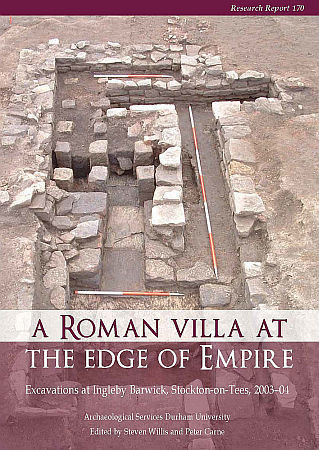
Format: Paperback
Pages: 244
ISBN: 9781902771908
Pub Date: 31 Aug 2013
Description:
Located on the south side of the River Tees, in north-east England, the Roman villa at Ingleby Barwick is one of the most northerly in the Roman Empire. Discovered originally through aerial photography and an extensive programme of evaluation, the site was excavated in 2003-04 in advance of housing development. Unusually for the region, the site demonstrated evidence for occupation from the later prehistoric period through to the Anglo-Saxon.
The excavations at Ingleby Barwick are significant not only for their scale but also for being carried out under modern recording conditions, allowing for extensive and detailed analysis of the finds. The villa is also a rare example of a Roman civilian site in the hinterland of Hadrian’s Wall.The Roman winged corridor villa and its outlying stone structures were surrounded by an extensive layout of rectilinear enclosures. While the main villa building was preserved in situ, excavation of the surrounding area revealed features such as ovens and paved surfaces, as well as rare finds such as a glass tableware vessel probably from Egypt and a large hoard of metalwork. The pottery has allowed a detailed phasing of the site to be proposed, while the environmental evidence reveals the villa to have been a working farm.
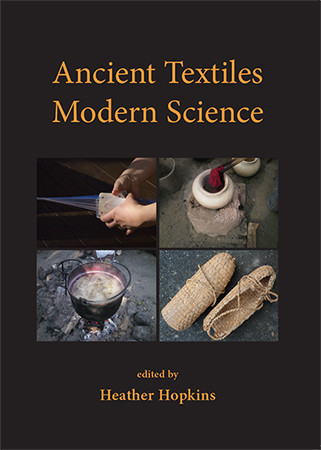
Format: Paperback
Pages: 133
ISBN: 9781842176641
Pub Date: 31 Aug 2013
Illustrations: b/w illustrations
Description:
The European Textile Forum was founded as an annual meeting for academics, craftspeople, re-enactors and enthusiasts to share their experiences and compare notes. With varied day workshops and evening lectures, the ‘Textilforum’ has something for everyone. The conference takes place over a week, which not only allows time to learn new techniques and discuss new findings, but to also undertake lengthy experiments that require a large number of experienced specialists.
Textilforum is the practical proving ground to test archaeological theories in appropriate surroundings. This book is the publication of a series of lectures and experiments that were undertaken at the First and Second European Textile Forum in 2009 and 2010. Each had a new approach, exploring a question of textile manufacture in a scientific way, revealing answers and outcomes that were unavailable before. The First European Textile Forum hosted an experiment that found the relationship between archaeological hand-spinning finds and the yarn they produce: only a meeting such as the Textilforum could generate sufficient data for analysis. This scientific approach reflects in contributions describing the reconstruction of tablet-woven artefacts, with explorations of the method of tablet-weaving and a reassessment of archaeological finds and depictions. The Second European Textile Forum explored the practical aspects of undertaking reconstructions such as Stone Age fabrics, Roman dyeing or the clothing of Gunnister Man, including the deconstruction of the original artefact, allowing for the unexpected and the implication of new findings. Techniques for treating raw materials, creating fabrics and finishing artefacts are explored. The wider purpose and legacy of the European Textile Forum is as a foundation for the coming years. The basis for research and communication, with a market for exchanging tools and materials, means that each participant can avoid individually ‘re-inventing the wheel’. The purpose of this book is to share these findings.

Format: Paperback
Pages: 90
ISBN: 9781907586187
Pub Date: 31 Aug 2013
Series: MoLAS Archaeology Studies Series
Description:
This thought-provoking volume presents the results of the archaeological investigation of a large site in Lundenwic. A fragmentary sequence nevertheless includes possible Early Saxon activity, 7th- and 8th-century settlement features including a cookshop, a workshop for non-ferrous metalworking and debris from a smithy, and the latest radiocarbon-dated inhumation in Lundenwic (cal AD 720–950). These excavations have made important contributions to our understanding of Lundenwic, which has been enhanced by the unprecedented level of organic preservation at the site.
The resulting survival of Saxon footwear, timber objects and uncharred botanical remains adds unusual detail to this publication.
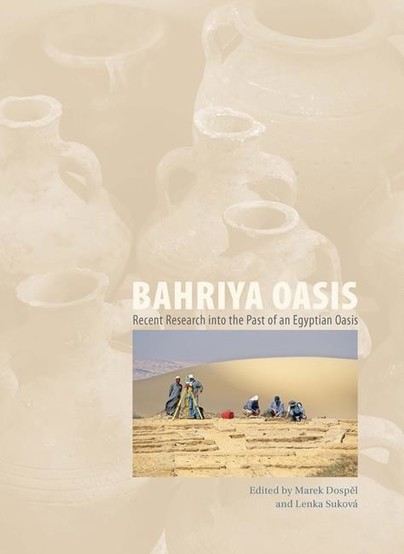
Format: Hardback
Pages: 314
ISBN: 9788073084578
Pub Date: 31 Aug 2013
Illustrations: 8 pages of colour plates
Description:
Through its 14 chapters, this book presents the outcomes of the recent exploration of Bahriya, an Egyptian oasis located in the Western Desert about 350 km south-west of Cairo. Part I of the volume is devoted to the southern part of the Oasis (also known as El-Hayz) and the exploration carried out there by the team led by the Czech Institute of Egyptology, Charles University in Prague.Part II concentrates on the northern part of the same oasis bringing forth the results of scholarly research by the French team led by Université de Strasbourg.
Complementing the two parts is Part III with the final chapter which deals with water-management in the Western Desert as a whole. Containing chapters written by archaeologists, Egyptologists, philologists and natural scientists, this richly illustrated book attempts at providing as comprehensive picture of the past of the Bahriya Oasis as can be drawn from the hitherto research, encompassing a wide range of aspects from settlement history and environment to material culture and written evidence.Lenka Suková graduated from the Faculty of Arts, Charles University in Prague in 2008. In 2003–2006, she was the Assistant Curator of the Department of Prehistory and Ancient History of the Near East and North Africa of the Náprstek Museum-National Museum in Prague. Since 2007, she works in the Czech Institute of Egyptology, Faculty of Arts, Charles University in Prague where she is concerned with the research into the history and dynamics of occupation of Eastern Sahara during the Early and Middle Holocene. Since 2009, she is the director of the Institute’s interdisciplinary research project concerned with the prehistoric occupation of Jebel Sabaloka in the Sudan. She is a PhD candidate at the same institute, with a research project focused on the rock art of Northeast Africa in the context of landscape and archaeology.Marek Dospěl holds master’s degrees in History, Latin, Egyptology, and Classical Archaeology and is currently pursuing a Ph.D. programme at the Czech Institute of Egyptology, Charles University in Prague. He is involved in the Institute’s exploration of Bahriya as a specialist in late antique and Byzantine Egypt, with focus on Coptology, documentary papyrology, and the interplay between the informative value of contextualized texts on the one side and archaeological data on the other. His publications include studies on Egyptian Christianity, material culture of late antique Egypt, as well as editions and annotated translations of Greek, Latin, and Coptic texts – both literary and documentary. He has also extensively published on Franciscan missionaries in Ottoman Egypt and Abyssinia.
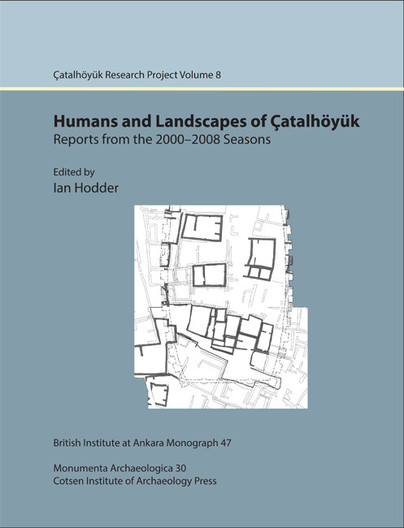
Format: Hardback
Pages: 320
ISBN: 9781898249306
Pub Date: 31 Aug 2013
Series: British Institute at Ankara Monograph
Illustrations: 250 figures and 50 tables
Description:
The Neolithic site of Çatalhöyük in Turkey has been world famous since the 1960s when excavations revealed the large size and dense occupation of the settlement, as well as the spectacular wall paintings and reliefs uncovered inside the houses. Since 1993 an international team of archaeologists, led by Ian Hodder, has been carrying out new excavations and research, in order to shed more light on the people who inhabited the site. The present volume reports on the results of excavations in 2000-2008 that have provided a wealth of new data on the ways in which the Çatalhöyük settlement and environment were dwelled in.
A first section explores how houses, open areas and middens in the settlement were enmeshed in the daily lives of the inhabitants, integrating a wide range of different types of data at different scales. A second section examines subsistence practices of the site’s inhabitants and builds up a picture of how the overall landscape was exploited and lived within. A third section examines the evidence from the skeletons of those buried within the houses at Çatalhöyük in order to examine health, diet, lifestyle and activity within the settlement and across the landscape. This final section also reports on the burial practices and associations in order to build hypotheses about the social organization of those inhabiting the settlement. A complex picture emerges of a relatively decentralized society, large in size but small-scale in terms of organization, dwelling within a mosaic patchwork of environments. Through time, however, substantial changes occur in the ways in which humans and landscapes interact.

Format: Paperback
Pages: 386
ISBN: 9789088901454
Pub Date: 31 Aug 2013
Description:
Engendering objects explores social and cultural dynamics among Maisin people in Collingwood Bay (Papua New Guinea) through the lens of material culture. Focusing upon the visually stimulating decorated barkcloths that are used as male and female garments, gifts, and commodities, it explores the relationships between these cloths and Maisin people. The main question is how barkcloth, as an object made by women, engenders people’s identities, such as gender, personhood, clan and tribe, through its manufacturing and use.
This book describes in detail how barkcloth (tapa) not only visualizes and expresses, but also materializes and defines, people’s multiple identities. By ‘following the object’ and how it is made and used in the performance of life-cycle rituals, in exchanges and in church festivities, this interaction between people and things, and how they are mutually constituted, becomes visible. How are women’s bodies and minds linked with the production of barkcloth? How do cloths produced by women both establish and contest clan identity? In what ways is the commodification of barkcloth related to gender dynamics? Barkcloth and its associated designs show how gender ideologies and the socio-material constructions of identity are performed and, as such, developed, established and contested.The narratives of both men and women reveal the ways in which barkcloth provides a link with the past and dreams for the future. The author argues that the cloths and their designs embody dynamics of Maisin culture and in particular of Maisin gender relations. In contributing to the current debates on the anthropology of ‘art’, this study offers an alternative way of understanding the significance of an object, like decorated barkcloth, in shaping and defining people’s identities within a local colonial and postcolonial setting of Papua New Guinea.“Engendering Objects is among the most comprehensive and innovative new works emerging from Melanesia examining the intimate connections between material culture, cultural identity and gendered personhood. Drawing upon extensive ethnographic fieldwork, archival research and examination of museum collections, Anna-Karina Hermkens traces the enduring yet innovative place of tapa (barkcloth) among the Maisin people. Written with warm compassion and immediacy, the book is a theoretically provocative, accessible and compelling portrait of changing life in a Papua New Guinean village society.” – John Barker, University of British Columbia“This book makes a most welcome contribution to the study of the materiality by showing how gender is performed in the sensuous terms of clothing, food, and the exchange of objects. Anna-Karina Hermkens accomplishes this with enviable care and intellectual resources, and a prose and ethnography that make the book a pleasure to read.” – David Morgan, Duke University“Anna-Karina Hermkens takes us to look at designs on bark cloth from Papua New Guinea through a magnifying glass. A fascinating perspective on material culture evolves. Beyond the art work we discover individuals – mainly women – painting their stories about who they and their beloved are as women and men, as traditional members of a clan, and also what they head for as strugglers in a new economy driven world.” – Christian Kaufmann, Honorary Research Associate, Sainsbury Reseach Unit, University of East Anglia, Norwich UK, former curator for Oceania at the Museum der Kulturen BaselAbout the author:Anna-Karina Hermkens obtained her PhD in Cultural Anthropology in 2005 from Radboud University Nijmegen. She is currently working as a postdoctoral research fellow at the ‘College of Asia and the Pacific’ of the Australian National University in Canberra Australia.

Format: Paperback
Pages: 422
ISBN: 9789088901065
Pub Date: 31 Aug 2013
Illustrations: 36 colour, 27 b/w illustrations
Description:
What are European archaeologists doing abroad? What have they been doing there for the past three to four centuries? Are they doing things differently nowadays?
To address these questions, this book explores the scope, impact and ethics of European archaeological policies and practices in the Mediterranean area, the Near East, sub-Saharan Africa, Asia and Latin America. Acknowledging that international and transcultural projects have a range of different stakeholders, the first part of this book aims to identify some of the values and motivations behind different European archaeologies abroad. This is done by providing thorough historical overviews on a range of European countries, including France, Spain, Germany, Belgium, the Netherlands and Poland. But how are these values translated, through socio-political, theoretical and administrative frameworks, unto local circumstances in host countries? And how are these archaeological activities received locally? The second part of this book attempts to answer these questions through a range of historical and contemporary case studies, in Africa, in Asia, in South America, in the Near East and in Europe.The third part of the book offers several critical reflections on European values, motivations and collaboration projects, as perceived by archaeological heritage professionals based in, and/or working in Senegal, Sudan, Somaliland, Colombia, and the Near East.This collection of historical overviews, contemporary case studies and critical reflections focuses on the challenging relationships between archaeological practices and policies, including the requirements and wishes of archaeologists, of local communities and of other stakeholders in Europe and in the host countries. In addition to researchers and students, this book should be of interest to practicing archaeologists, heritage professionals and policy makers the world over, as they seek to reach better informed decisions regarding archaeological projects and international collaboration.This publication was produced in the framework of the ACE project – “Archaeology in Contemporary Europe. Professional Practices and Public Outreach”, with the support of the Culture 2007-2013 programme of the European Commission.

Format: Paperback
Pages: 262
ISBN: 9789088901584
Pub Date: 31 Aug 2013
Description:
Aujourd’hui, les traces de la présence amérindienne en Martinique constituent, en dehors des pétroglyphes de la forêt de Montravail et des pièces exposées dans les musées de l’île, un patrimoine invisible. Cependant, avant son invasion par les européens cette île a bien été pendant au moins 1500 ans terre amérindienne.Pendant dix années, entre 1995 et 2005, une équipe pluridisciplinaire internationale a ainsi travaillée à étudier l’occupation précolombienne de la Martinique.
Ce programme initialement dirigé par J.-P. Giraud puis par Benoît Bérard a été menée dans le cadre d’un Projet Collectif de Recherche intitulé “Le néolithique martiniquais dans son contexte antillais” agréé par le Ministère de la Culture et de la Communication et financé par la Direction des Affaires Culturelle de la Martinique. La synthèse des résultats de ces travaux a été présentée au public martiniquais dans le cadre d’un séminaire international qui s’est tenu à Fort-de-France en mai 2007 avec le soutient du Conseil Général. Elle constitue le cœur de cet ouvrage. Elle a été complétée par un certain nombre de contributions permettant une mise en perspectives des résultats obtenus.Ce volume se divise en trois parties. La première fait un état des lieux de la connaissance sur les différentes cultures précolombiennes qui se sont succédées dans l’île au travers de la présentation de plusieurs sites de références. Elle se conclue par un regard historique qui grâce au récit de l’incroyable vie de Francisco Congo illustre les contacts entre populations amérindiennes, africaines et européennes au début de la colonisation et nous offre des informations inédites sur l’origine de la communauté des Caraïbes noirs de Saint-Vincent. La seconde partie de l’ouvrage présente un bilan des connaissances sur la relation entre les amérindiens et leur environnement naturel au travers d’études archéo-vulcanologiques, archéo-zoologiques et paléo-ethnobotaniques. Ce recours aux sciences paléo-environnementales offre pour la première fois la possibilité d’une réelle approche historicisée de cette relation. Enfin, parce ce que la division géopolitique coloniale et post-coloniale de l’archipel antillais n’a pas de sens appliquée à l’étude de son peuplement précolombien, il nous est apparu essentiel de conclure cet ouvrage par une ouverture sur les îles voisines en particulier la Dominique et la Guadeloupe. Cela nous fait entrée dans cette perspective archipélique qui guide aujourd’hui le travail des archéologues.Cet ouvrage est le premier volume synthétique sur l’occupation amérindienne de la Martinique publié depuis des décennies. Par son sérieux et son accessibilité il met enfin à la disposition d’un public de spécialistes et de non-spécialistes un bilan des dernières connaissances produites. Il répond en cela tant à un besoin scientifique qu’à une réelle demande sociale.About the editor:Benoît Bérard is currently an associate professor of Caribean Archaeology at the Université des Antilles et de la Guyane in Martinique campus where he is head of the history department and Vice-director of the “Archéologie industrielle, histoire et patrimoine de la Caraïbe” EA 929 laboratory.
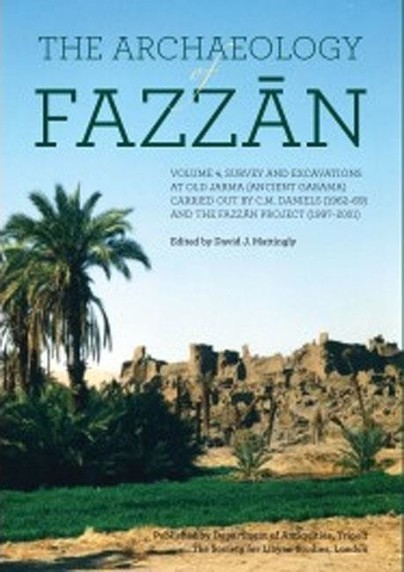
Format: Hardback
Pages: 700
ISBN: 9781900971188
Pub Date: 31 Aug 2013
Imprint: Society for Libyan Studies
Series: Society for Libyan Studies Monograph
Description:
This is the concluding volume of the Archaeology of Fazzān series, bringing to press the combined results of two Anglo-Libyan projects in southern Libya: the pioneering work of Charles Daniels between 1958 and 1977 and the Fazzān Project directed by David Mattingly between 1997 and 2001. The investigations carried out by these two projects allow an entirely new reconstruction and understanding of the historic desert societies of the Libyan Sahara. In particular, the work has shed light on the ancient people known to Greco-Roman writers as the Garamantes, who are now revealed to have been a sophisticated state, with permanent towns and villages and an economy based on oasis agriculture and Saharan trade.
This volume presents the results of excavations and survey work at the site of Old Jarma, identifiable with the Garamantian capital, Garama, that also had a long after-life in Medieval and Early Modern times. The Fazzān Project revealed an extraordinary urban story, spanning 10 major construction phases that extended from c.400 BC to the AD 1930s. The detailed publication of the complex stratigraphic evidence and the accompanying finds assemblages opens a fascinating window on the cultural heritage and lifeways of a central Saharan oasis.

Format: Paperback
Pages: 221
ISBN: 9788073084448
Pub Date: 31 Jul 2013
Description:
The book includes contributions of the following authors: Hartwig Altenmüller, Ladislav Bareš, Miroslav Bárta, Andreas Effland, Martin Fitzenreiter, Hans Goedicke, Peter Jánosi, Dieter Kurth, Christian Loeben, Juan Carlos Moreno García, Jana Mynářová, Anthony Spalinger, Miroslav Verner, Hana Vymazalová, Wolfgang Waitkus.















